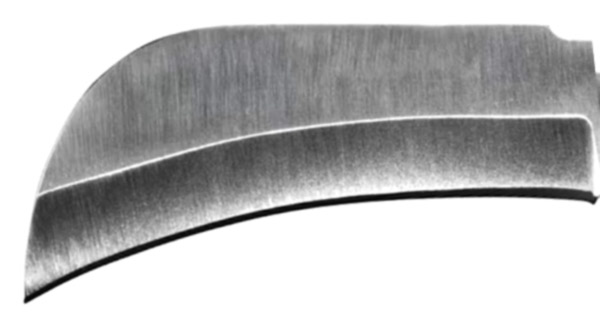
The Hawkbill Blade: That One Time Nature Designed the Perfect Cutting Tool And Then Just Copied It
The hawkbill blade is what happens when humans look at nature’s most efficient predators and say, “Hold my beer, I can make that even better.”
What is a Hawkbill Blade?
Picture a blade that decided geometry class was optional and went straight to “Advanced Hooking and Slicing 101.” The hawkbill features an inwardly curved edge that mirrors a bird of prey’s beak.
This isn’t just a pretty curve for show. That inward hook creates a natural pulling action that keeps your blade engaged with whatever you’re cutting. It’s like having a cutting assistant that refuses to let go.
The Science Behind the Slice
Curve Appeal
That distinctive inward curve isn’t just there to look intimidating (though it does that beautifully). It provides control that would make a Formula 1 driver jealous. The tip naturally pulls into your material, which means less slipping, more precision, and fewer “oops, that wasn’t supposed to get cut” moments.
The Strong, Silent Tip
Don’t let the curve fool you – that reinforced tip means business. It’s strong enough to pierce when needed but smart enough to hook when that’s the better play. It’s like having a Swiss Army knife that went to tactical school and graduated with honors.
Where This Overachiever Shines
Garden Warfare
Gardeners have discovered what hawks knew all along – sometimes you need to hook around your target for the perfect cut. Pruning, harvesting, dealing with stubborn stems that think they’re tougher than they are – the hawkbill handles it all with confidence.
Angler’s Secret Weapon
Fishermen love this blade because it cuts lines and cleans fish with surgical precision. Plus, there’s something poetic about using a hawk-inspired blade while outsmarting creatures that live underwater. It’s like bringing aerial superiority to aquatic challenges.
Tactical Excellence
Speaking of serious business, tactical applications have embraced the hawkbill design. The Karambit, for instance, is basically the hawkbill’s tactical cousin who got a little too into ninjitsu. When you need a blade for self-defense or cutting through materials that don’t want to cooperate, this design delivers.
The Bottom Line
The hawkbill blade proves that sometimes the best human innovations come from paying attention to what nature already perfected. It’s a design that works because it makes sense – the curve serves a purpose, the tip has a job, and everything works together like a well-orchestrated symphony of cutting efficiency.
Whether you’re tending your garden, preparing your catch, handling daily tasks, or dealing with situations that require a more serious approach, the hawkbill blade brings that perfect combination of control, efficiency, and reliability that makes you wonder why all blades aren’t designed this way.
Because sometimes the best tool is the one that learned from a predator that’s been perfecting its technique for millions of years. Wildlife doesn’t mess around, and neither should your blade.
